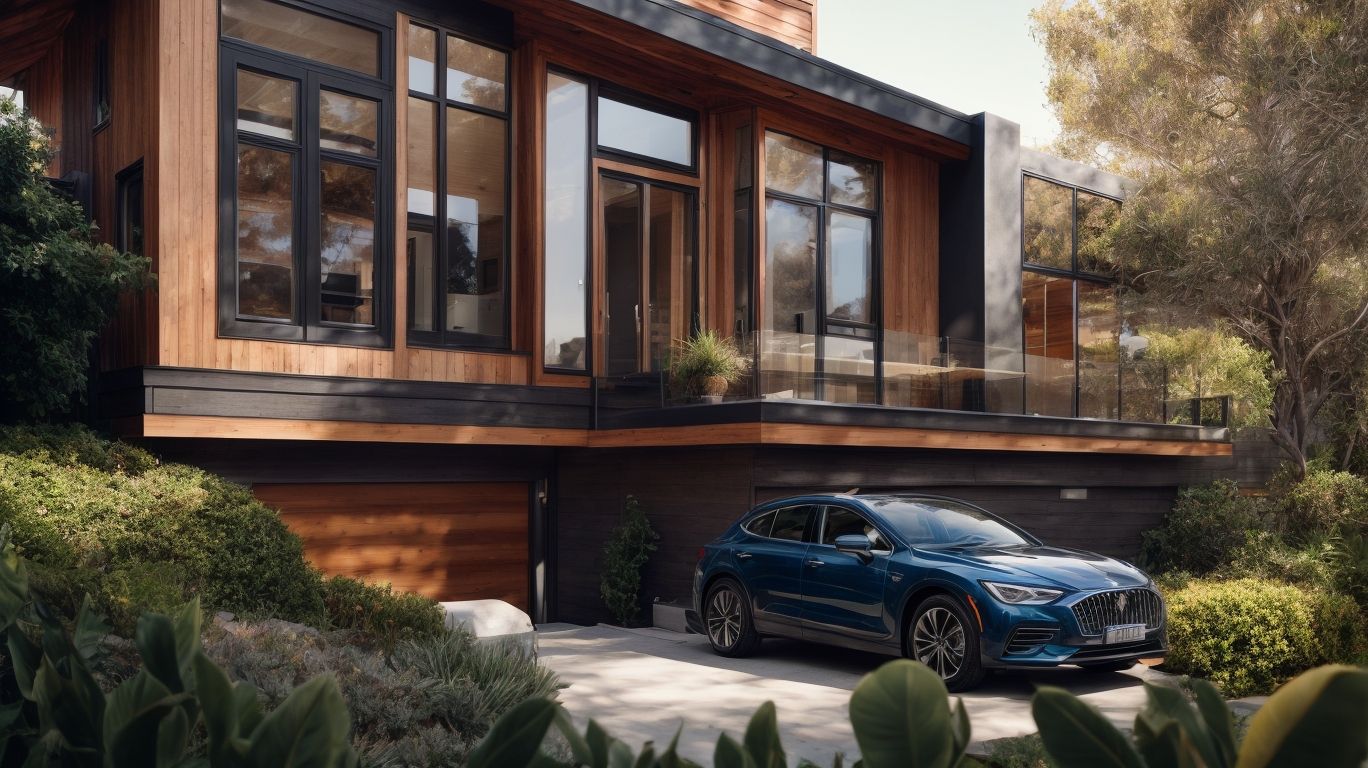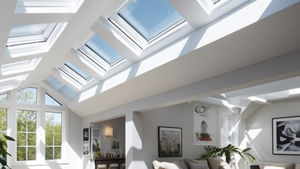AFFORDABLE • 1-2 WEEKS • BAY AREA
Accessory Dwelling Units (ADUs) Engineers
ADUs Engineers
Types of ADUs:
- Detached
- Attached
- Repurposed
- ADUs
- JADUs
- CalHFA’s ADU Grant Up To $40,000
Customer Ratings
30+ YEARS
OF COMBINED EXPERIENCE
800+
PROJECTS DELIVERED
Learn More About
ADU Grant Program
What are ADUs and JADUs?
An accessory dwelling unit (ADU) is an accessory to a primary residence and has complete independent living facilities for one or more persons and has a few variations:
- Detached: The unit is separated from the primary structure.
- Attached: The unit is attached to the primary structure.
- Converted Existing Space: Space (e.g., master bedroom, attached garage, storage area, or similar, or an accessory structure) on the lot of the primary residence that is converted into an independent living unit.
- Junior Accessory Dwelling Units (JADUs): A specific type of ADU created within the walls of a proposed or existing single-family residence and shall contain no more than 500 square feet
What are the benefits of ADUs?
Nearly 20% of homes built in California are ADUs, according to data from the state’s Department of Housing. More than 60,000 permits have been approved since the state started rolling back legislation in 2018.
State ADU Law and recent changes intend to address barriers, streamline approval, and expand potential capacity for ADUs, recognizing their unique importance in addressing California’s housing needs.
- ADUs are an affordable type of home to construct in California because they do not require paying for land, major new infrastructure, structured parking, or elevators.
- ADUs can provide a source of income for homeowners.
- ADUs are built with cost-effective wood frame construction, which is significantly less costly than homes in new multifamily infill buildings.
- ADUs allow extended families to be near one another while maintaining privacy.
- ADUs can provide as much living space as many newly-built apartments and condominiums, and they’re suited well for couples, small families, friends, young people, and seniors.
- ADUs give homeowners the flexibility to share independent living areas with family members and others, allowing seniors to age in place as they require more care.
What legislative initiatives encourage ADU development?
The ADU construction boom started after legislators passed bills to expedite the permit approval process, allow larger units, ease parking requirements, reduce fees and suspend local rules requiring that the owners occupy the units. Selected recent legislation that amended State ADU Law includes:
AB 3182 (Chapter 198, Statutes of 2020)
- States that an application for the creation of an ADU or JADU shall be deemed approved (not just subject to ministerial approval) if the local agency has not acted on the completed application within 60 days. (Gov. Code, § 65852.2, subd. (a)(3).)
- Requires ministerial approval of an application for a building permit within a residential or mixed-use zone to create one ADU and one JADU per lot (not one or the other), within the proposed or existing single-family dwelling, if certain conditions are met. (Gov. Code, § 65852.2, subd. (e)(1)(A).)
AB 68 (Chapter 655, Statutes of 2019), AB 881 (Chapter 659, Statutes of 2019), and SB 13 (Chapter 653, Statutes of 2019)
- Eliminates all owner-occupancy requirements by local agencies for ADUs approved between January 1,2020, and January 1, 2025. (Gov. Code, § 65852.2, subd. (a)(6).)
- Prohibits a local agency from establishing a maximum size of an ADU of less than 850 square feet, or 1,000 square feet if the ADU contains more than one bedroom and 7 requires approval of a permit to build an ADU of up to 800 square feet. (Gov. Code, § 65852.2, subds. (c)(2)(B) and (C).)
- Clarifies that when ADUs are created through the conversion of a garage, carport or covered parking structure, replacement of off-street parking spaces cannot be required by the local agency. (Gov. Code, § 65852.2, subd. (a)(1)(D)(xi).)
- Reduces the maximum ADU and JADU application review time from 120 days to 60 days. (Gov. Code, § 65852.2, subd. (a)(3) and (b).)
- Establishes impact fee exemptions and limitations based on the size of the ADU. ADUs up to 750 square feet are exempt from impact fees, and ADUs that are 750 square feet or larger may be charged impact fees but only such fees that are proportional in size (by square foot) to those for the primary dwelling unit. (Gov. Code, § 65852.2, subd. (f)(3).)
Zoning and Development Standards
- ADUs can exceed general plan and zoning densities. An ADU is an accessory use for the purposes of calculating allowable density under the general plan and zoning and does not count toward the allowable density.
- A lot where there are currently multiple detached single-family dwellings is eligible for creation of one ADU per lot by converting space within the proposed or existing space of a single-family dwelling or existing structure and by building a new detached ADU subject to certain development standards. (Gov. Code § 65852.2, subds. (e)(1)(A) and (B).)
- ADUs are allowed within a historic district and on lots where the primary residence is subject to historic preservation
Size Requirements
- Local governments may not impose minimum lot size requirements on ADUs.
- A statewide exemption ADU is an ADU of up to 800 square feet, 16 feet in height, as potentially limited by a local agency, and with four-foot side and rear yard setbacks. State ADU Law requires that no lot coverage, floor area ratio, open space, or minimum lot size will preclude the construction of a statewide exemption ADU.
Parking Requirements
- Certain ADUs are exempt from parking requirements, including:
- ADUs located within one-half mile walking distance of public transit.
- ADUs located within an architecturally and historically significant historic district.
- ADUs that are part of the proposed or existing primary residence or an accessory structure.
- When on-street parking permits are required but not offered to the occupant of the ADU.
- When there is a car share vehicle located within one block of the ADU.
- Parking requirements for ADUs shall not exceed one parking space per unit or bedroom, whichever is less.
Setbacks and height requirements
- No setback shall be required for an ADU created within an existing living area or accessory structure or an ADU created in a new structure in the same location as an existing structure, while not exceeding the existing dimensions, including height.
- There is no height limit contained in State ADU Law, but local agencies may impose height limits provided that the limit is no less than 16 feet.
Impact Fees
- An ADU is exempt from incurring impact fees from local agencies, special districts, and water corporations if less than 750 square feet. If an ADU is 750 square feet or larger, impact fees shall be charged proportionately in relation to the square footage of the ADU to the square footage of the primary dwelling unit.
- Agencies can waive impact and any other fees for ADUs. Also, local agencies may use fee deferrals for applicants.
Renter- and Owner-Occupancy
- ADUs permitted ministerially, under subdivision (e), shall be rented for terms longer than 30 days.
- There is no owner-occupancy requirement for newly created ADUs effective January 1, 2020.
Environmental Review
- ADUs approved ministerially are statutorily exempt from California Environmental Quality Act (CEQA) pursuant to Section 15268 (Ministerial Projects) of the CEQA guidelines and Section 21080(b)(1) of the Public Resources Code. In addition, ADUs can be categorically exempt from CEQA pursuant to Sections 15301 and 15303 of the CEQA guidelines, authority cited under Public Resources Code Section 21083 and 21087.
ADU Law is the statutory minimum requirement. Local governments may elect to go beyond this statutory minimum and further the creation of ADUs. (Gov. Code, § 65852.2, subd. (g).)
What funding initiatives encourage ADU development?
The California Health and Safety Code (HSC), Section 65583(c)(7), requires that cities and counties develop a plan that incentivizes and promotes the creation of ADUs that can be offered at affordable rent for very-low to moderate-income households. First-time home buyers and ADU builders can take advantage of the numerous ADU funding programs available.
CalHFA’s ADU Grant Program – Effective September 20, 2021, the California Housing Finance Agency’s (CalHFA) ADU Grant Program provides up to $40,000 in assistance to reimburse qualifying homeowners for predevelopment costs necessary to build and occupy an ADU or JADU on a lot with a single-family dwelling unit. The ADU Grant Program is intended to create more housing units in California by providing a grant to reimburse qualifying homeowners for predevelopment costs and interest rate buy-downs. Predevelopment costs include, but are not limited to, architectural designs, permits, soil tests, impact fees, property surveys, energy reports, and utility hookups.
All funds for the ADU Grant program were fully reserved as of 1 March 2023. Homeowners with incomes less than CalHFA income limits are eligible. The state anticipated that the funding would be distributed by the end of 2022 and expected 2,500 new housing units to be built.
ADU Grant Application Process
- Application
- Homeowner applies for a construction loan with an approved lender
- Predevelopment costs rolled into construction loan for no or minimal upfront costs to homeowner
- Homeowner completes CalHFA ADU grant application forms
- Homeowner applies for a construction loan with an approved lender
- Loan Approval
- Lender approves construction loan: lender prequalifies homeowner for CalHFA ADU grant
- Pre-development
- Predevelopment work starts, paid through the construction loan account: Lender sends ADU Grant application package to CalHFA, including list of costs and invoices of pre-development
- Grant Disbursement
- CALHFA approves grant and wires funds to loan account: This lowers ADU construction loan principal that homeowner has to repay
- Construction
- Construction of the ADU, financed with construction loan
Other Potential State Grants and Financial Incentives for ADUs
- CalHome Program— State funds to local public agencies and nonprofit corporations for first-time homebuyer mortgage assistance including a home purchase with an ADU or JADU; owner-occupied rehabilitation assistance including rehabilitation of ADUs or JADUs; ADU/JADU assistance including construction, repair, and reconstruction; and homeownership development project loans including predevelopment and carrying costs during construction related to ADUs and JADUs (HCD CalHome program)
- Local Early Action Planning (LEAP) Grants— State grants to local jurisdictions including eligible partnerships for housing planning, and developing or improving an ADU ordinance in compliance with Section 65852.2 of the Government Code (HCD LEAP program)
- Local Housing Trust Fund (LHTF) Program— Matching funds to local and regional housing trust funds. Funds may also be used for the construction, conversion, repair, reconstruction or rehabilitation of ADUs or JADUs (HCD LHTF program)
- Regional Early Action Planning (REAP) Grants— Grants to council of governments (COGs) and other regional entities for activities relating to housing planning and activities including establishing Prohousing Policies such as adopting ADU ordinances or other mechanisms that reduce barriers for property owners to create ADUs (HCD REAP program)
- SB 2 Planning Grants— Grants to local governments including eligible partnerships for housing planning and to encourage ADUs and other innovative building types through ordinances, outreach, fee waivers, pre-approved plans, website zoning clearance assistance, and other homeowner tools or finance tools (HCD SB2 program)
- Community Development Block Grant Program (CDBG)— Federal funds allocated to non-entitlement jurisdictions, and non-entitlement jurisdictions that partner with non-federally recognized Native American communities for community development activities including single- and multi-family rehabilitation and potential local ADU rehabilitation and planning programs. Applicants must be income qualified in low- to moderate-income households for rehabilitation and areas for planning. Contact your local jurisdictions for more information.
See Our
ADU Projects
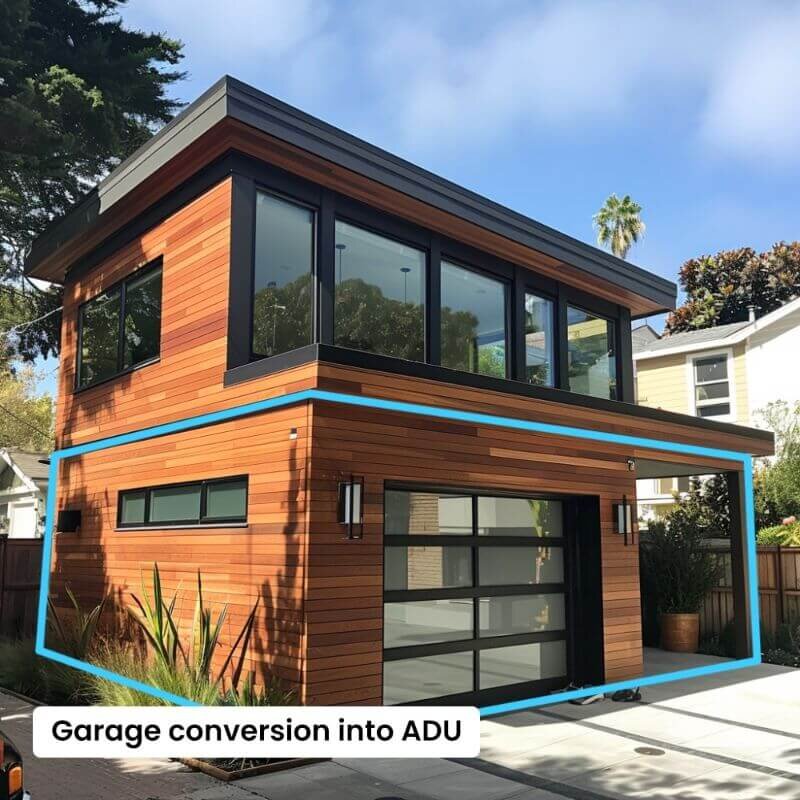
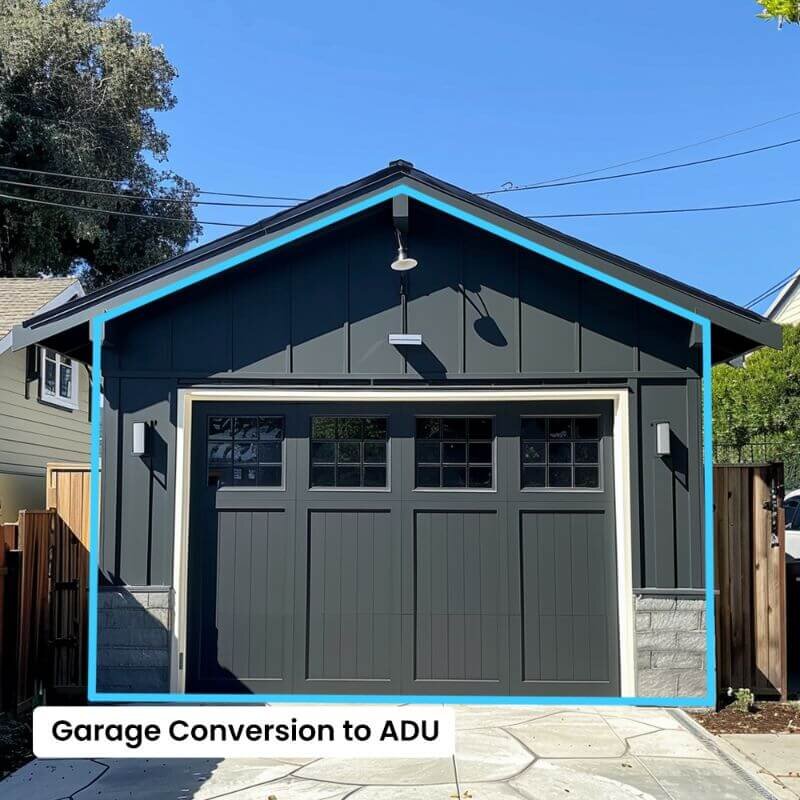
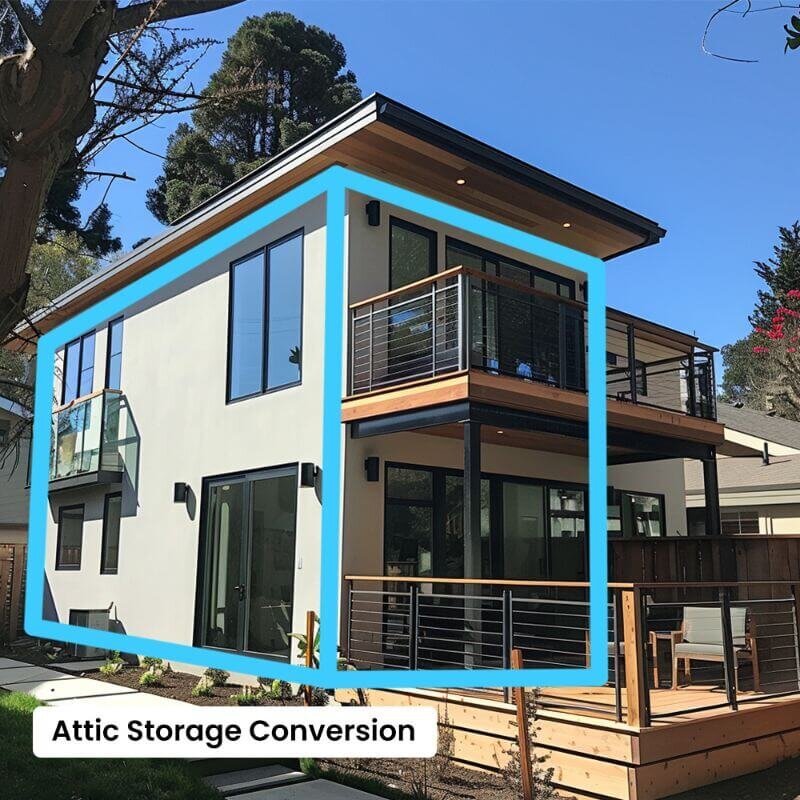
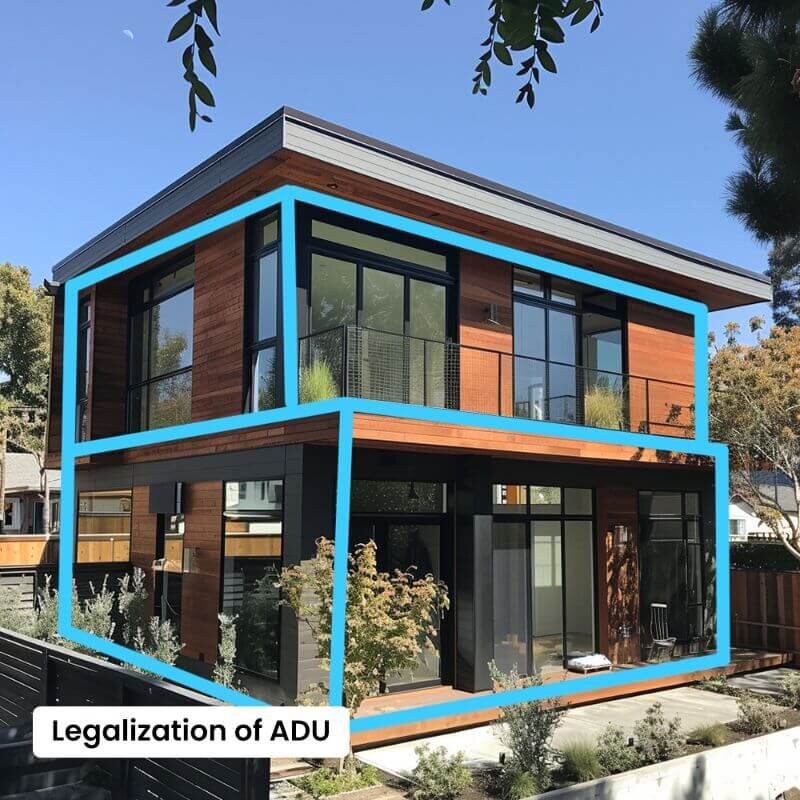
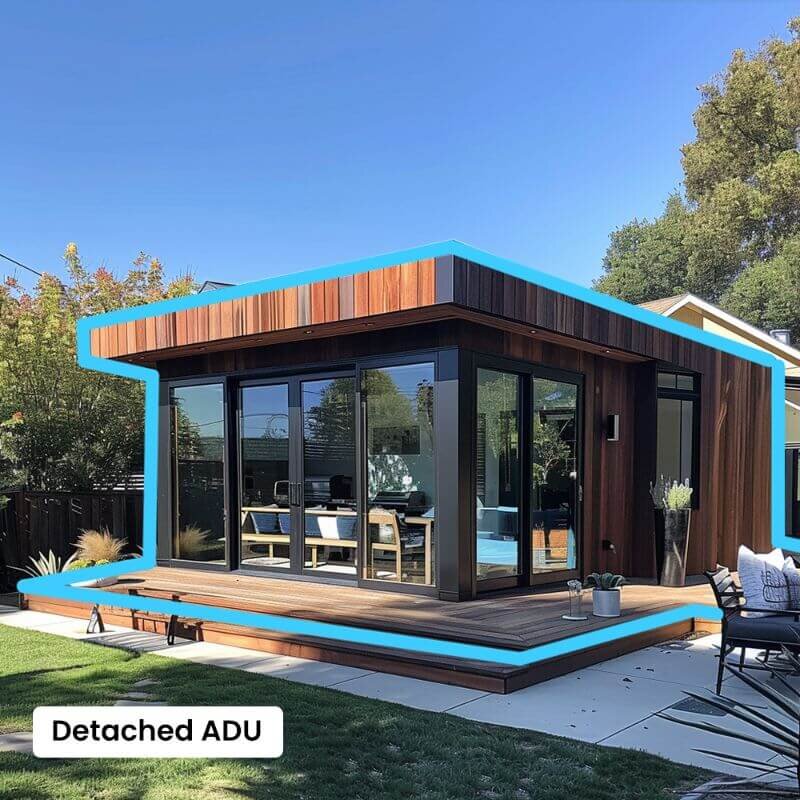
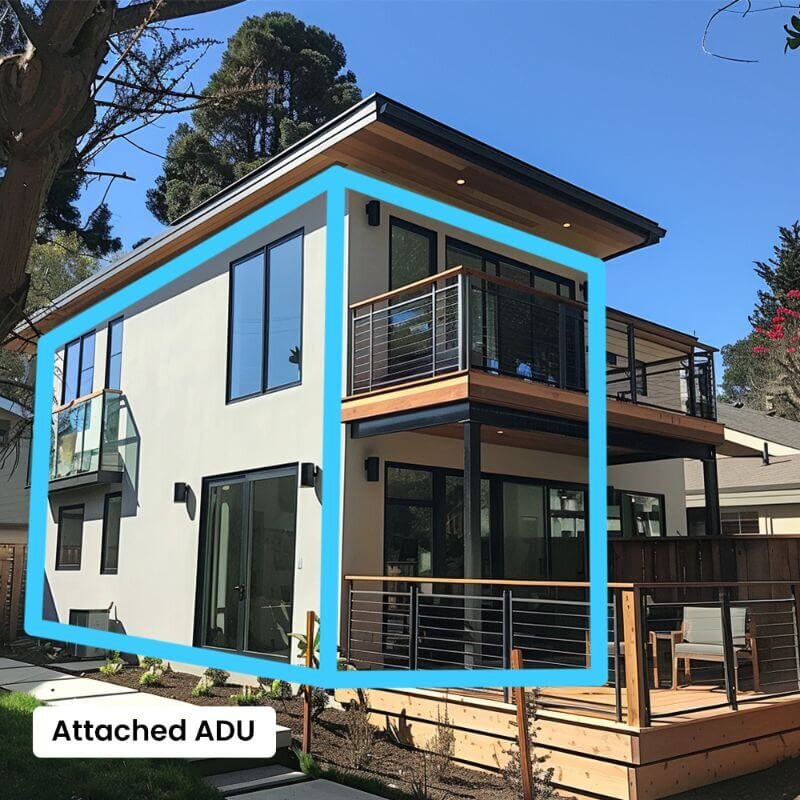
SF Bay Engineering's
Service Process
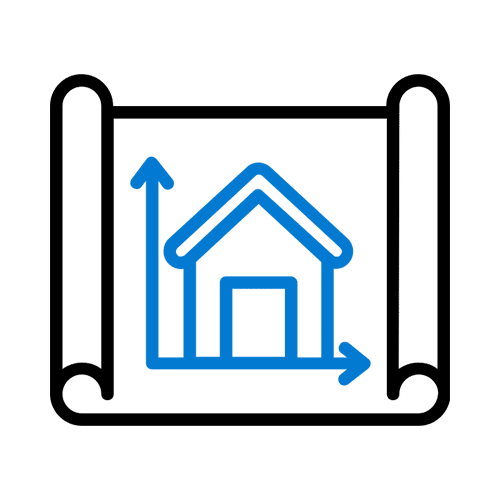
Free Consultation
1 business day response via phone, email, or Zoom

Competitive Pricing
Receive a service proposal within one business day

Quick Turnaround
Most projects are completed within three weeks

Flexible Change Order
Accommodate additional requests efficiently

Follow-through Permit Process
Managing city reviews until permit approval

Construction RFIs
Seamless communication with contractors within 90 days at no extra charge
Transforming Spaces
One Project at a Time
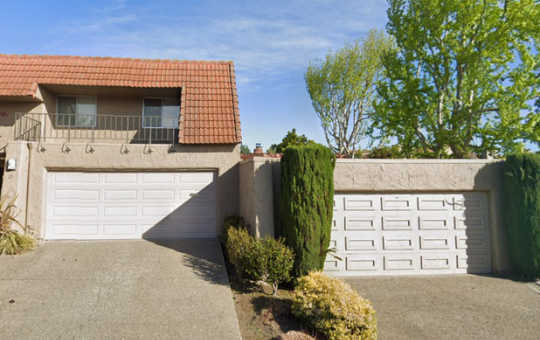
Belmont, CA
3 weeks
3 weeks
2 months
2 months
$4,000 ± $500
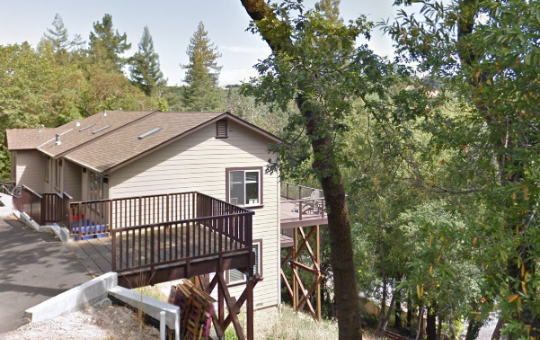
Healdsburg, CA
2 weeks
2 weeks
1 month
1 month
$2,500 ± $500
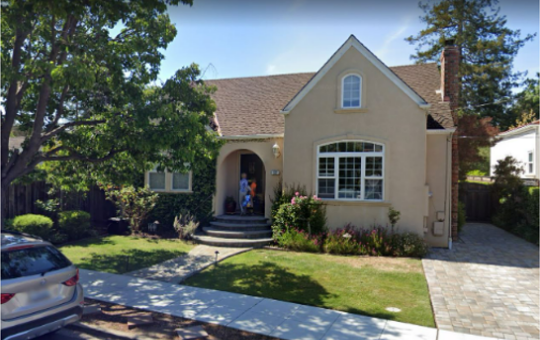
San Carlos, CA
2 weeks
2 weeks
2 months
2 months
$3,000 ± $500

Walnut Creek, CA
3 weeks
3 weeks
2 months
2 months
$2,600 ± $500
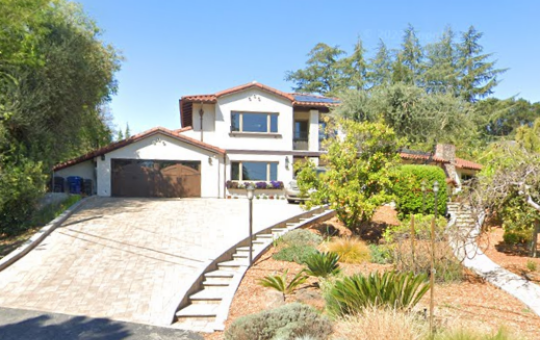
Los Altos Hills, CA
4 weeks
4 weeks
6 months
6 months
$4,500 ± $500
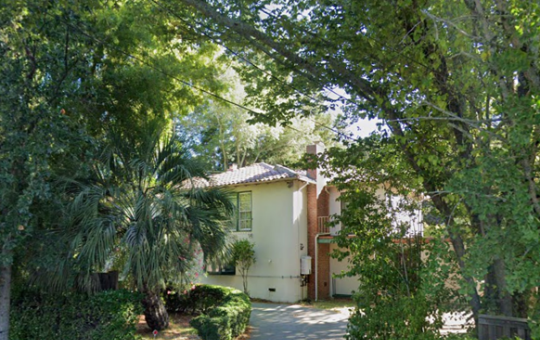
San Anselmo, CA
3 weeks
3 weeks
2 months
2 months
$3,000 ± $500
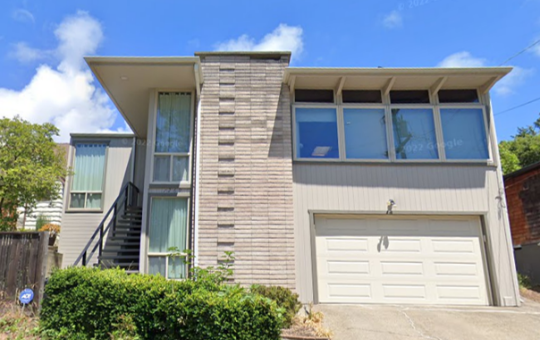
Berkeley, CA
2 weeks
2 weeks
1 month
1 month
$2,400 ± $500
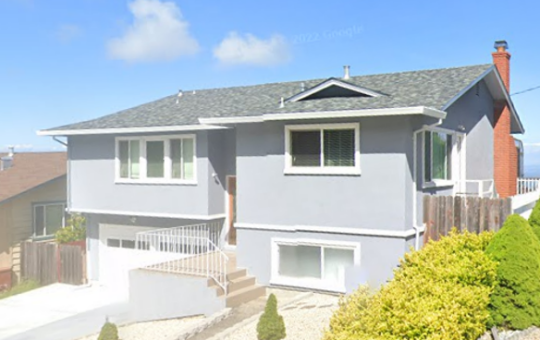
San Bruno, CA
3 weeks
3 weeks
3 months
3 months
$3,500 ± $500

San Francisco, CA
3 weeks
3 weeks
4 months
4 months
$4,000 ± $500

San Francisco, CA
3 weeks
3 weeks
2 months
2 months
$3,400 ± $500

San Carlos, CA
4 weeks
4 weeks
3 months
3 months
$4,500 ± $500

San Mateo, CA
3-4 weeks
3-4 weeks
4 months
4 months
$4,200 ± $500
Inspired By Our Customers.
We love to hear from you.

Load Bearing Wall Removal
SF Bay Engineering is FAST. I submitted an online request to SF Bay Engineering for an onsite evaluation to remove a load-bearing wall. They called me back within an hour with a quote and a schedule. The visiting engineer came a few days later and was able to address all my questions with some quick sketches on the spot. The evaluation report came on the very same day as the site visit and the structural plans were delivered just 4 days after we signed the proposal, and they were approved over the counter. Definitely money well spent!
Damon S.Customer
South San Francisco

New Construction
My designer recommended SF Bay Engineering to me for my home remodel project. The engineer was on time, experienced and responsive. I had to make a few last-minute changes to the architectural plans with my designer towards the end of project and was expecting to be charged for change orders, but SF Bay Engineering was kind enough to cover minor changes for free. I honestly can’t ask for a better service and smoother process!
Sam A.Customer
San Francisco

Home Remodel and Addition
SF Bay Engineering is my go-to engineering team. Their engineers are very helpful and professional. They always recommend cost-effective designs to lower my construction cost and complete projects ahead of deadline. I am glad that I have found a team that I can trust.
Paul C.Customer
Alameda

Home Remodel and Addition
This is my third time working with SF Bay Engineering on residential projects in the Bay Area. Their engineering team is very experienced and responsive and their customer support responds within 24 hours even during weekends and public holidays. I would recommend SF Bay Engineering to anyone who’s looking for engineering professionals to complete their projects quickly and at an affordable price.
Dayana P.GC Partner
Petaluma

Pergola Design
My husband and I chose SF Bay Engineering because they offered the most competitive quotation for my pergola design. They are very responsive and their turnaround time is as advertised, delivering the permit sets within 2 weeks of the contract. The only inconvenience is that SF Bay Engineering does not help submit plans to the City, but they did help address all the plan check comments quickly and for free until my plans got approved. Overall, we are happy with the service and experience from SF Bay Engineering.
Diana J.GC Partner




